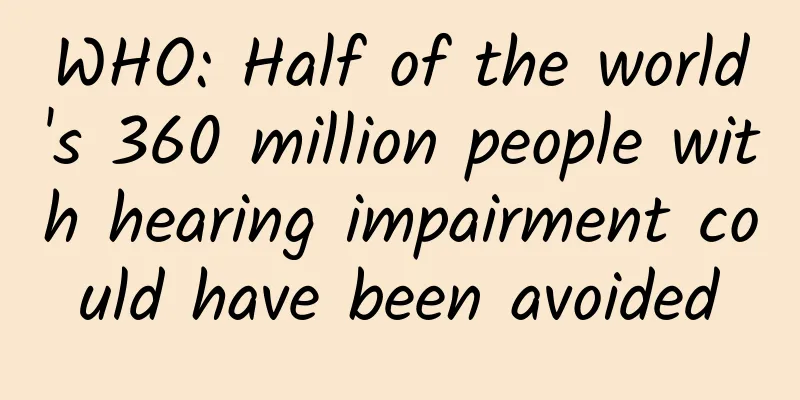National subsidies for new energy vehicles will be adjusted: market structure changes

|
"The industrialization of electric vehicles must ultimately rely on the market." On December 9, Chen Qingtai, former deputy director of the Development Research Center of the State Council, said. Chen Qingtai said that the new energy vehicle industry at this time still needs policy support, but what it needs more is market incentives, pressure and screening. All these situations show that the development momentum has reached a stage of transformation from policy-driven to market- and policy-driven. Since last year, with new energy vehicles exceeding 1.5% of automobile production and sales, China's electric vehicles have entered the growth stage from the introduction stage. Improving technology, improving the industrial chain, reducing production costs, and establishing independent brands are the core routes of the growth stage. In Chen Qingtai's view, the government's policy mix must generate long-term expectations and incorporate the long-term strategies of relevant industries and enterprises; policy promotion should leverage the market to explore and release market potential; government policies should play a role in both incentives and forced forces, without distorting the market or weakening competition; government policies do not interfere with technological routes, and the implementation of policies does not lead to dependence on the government, but rather a timely decline in the government's role. The decline is increasing 2016 was a landmark year for new energy vehicles to gain widespread recognition. Prior to this, the government introduced various forms of incentive policies to make up for the lack of product technology maturity and high initial costs, and quickly launched the market. "The new policy is still being signed." After confirming with multiple parties, a reporter from 21st Century Business Herald learned that the new policy on subsidies for new energy vehicles is about to be released. The current subsidy adjustment plan is to increase the technical threshold requirements for passenger cars, make comprehensive adjustments to buses, clarify the technical requirements for special vehicles, and refine the subsidy requirements for fuel cell vehicles. Moreover, the new national subsidy policy will be more significantly reduced than the previous version, and the reduction rate for some models will reach 60%. This will trigger changes in the domestic new energy vehicle market structure. Among them, pure electric logistics vehicles will receive greater support. Due to the serious fraud of electric buses, this proportion is decreasing, and the demand for ternary batteries will increase, becoming the two major directions of the development of the new energy vehicle market. On December 2, the Ministry of Industry and Information Technology released the fourth batch of "Recommended Model Catalog for the Promotion and Application of New Energy Vehicles", with a total of 678 products selected. In this batch of promotion catalogs, passenger cars still accounted for 55%. Among the logistics models, 178 transport vehicles were selected, accounting for 26%. "Although domestic buses and logistics vehicles only account for about 10% of the overall market usage, their mileage may exceed 90%, which is far greater than that of passenger cars. Therefore, we must combine policy guidance and identify market demand." On December 11, Fang Jianhua, president of Guoxuan High-tech, said in an interview with a reporter from 21st Century Business Herald that there is a lot of room for the development of logistics vehicles. In addition, the Ministry of Industry and Information Technology stated at a meeting on further improving the safety supervision of the promotion and application of new energy vehicles that from January 1, 2017, new applications for the "Recommended Model Catalog for the Promotion and Application of New Energy Vehicles" for buses using ternary batteries should also submit a third-party inspection report. This is also interpreted as a major positive for the development of ternary lithium batteries. That is, on the premise of passing the thermal runaway test and the thermal runaway extended test, ternary lithium battery buses can apply for the recommended catalogue, which will mark the "suspension of the use of ternary batteries in buses". The ban is expected to be lifted from January 1, 2017. Battery costs need to be reduced urgently "The new energy vehicle industry actually still has some difficult days to go. Next year and the year after will be equally difficult. The future depends on everyone's ability to reduce costs." On December 7, Zeng Yuqun, founder of CATL, stated at the Gaogong Lithium Battery Annual Meeting that the spring of power batteries and new energy vehicles is far from coming, and cost reduction has become the industry's biggest pressure. Driven by the demand for electric vehicles, the total output value of lithium batteries reached 112 billion yuan in 2016, a year-on-year increase of 31.8%. The output value of power batteries increased by 53.9% compared with 2015. Affected by the adjustment of subsidy policies, the output value was lower than expected at the beginning of the year. The growth rate of energy storage output value was 7.7%, but the scale was small and still in the incubation period. Meanwhile, driven by policies and capital, the power battery production capacity reached 60GWh in 2016. Mainstream power battery factories are currently expanding production, but some companies have shelved their expansion plans due to subsidy adjustments, the suspension of ternary batteries entering the market, investigations into fraudulent subsidies, and adjustments to power battery regulations. Overcapacity will begin in 2017, and price wars may begin, increasing pressure to reduce costs. The above shows that in the market trend of power batteries, ternary lithium batteries are becoming a major trend. The output of ternary power batteries accounted for 34%, an increase of 11 percentage points year-on-year, mainly driven by the growth of passenger electric vehicles; the lifting of the ban on ternary buses will further promote the development of ternary batteries; and the national plan to achieve an energy density of 300Wh/kg by 2020 must be achieved through new material systems and new battery technologies. On November 22, the Ministry of Industry and Information Technology's website published the "Automotive Power Battery Industry Standard Conditions (2017)" (hereinafter referred to as the "Standard Conditions") for public comment, stipulating that "the annual production capacity of lithium-ion power battery cells shall not be less than 8 billion watt-hours." This increases the annual production capacity requirements for lithium battery cells by 39 times. Currently, the only domestic battery manufacturers that meet the above requirements are BYD and CATL. It is expected that next year, Guoxuan High-tech's production capacity will reach 80% of the requirements. For power battery companies, in order to reduce costs to the greatest extent possible, they need to break the monopoly of the industrial chain, build an ecological chain for battery recycling and utilization, realize large-scale production and manufacturing, and carry out large-scale mass production based on battery standardization. Zeng Yuqun believes that there will be five major demand markets in the field of new energy vehicles in the future. It is expected that starting from next year, the price of lithium batteries will drop further, and the micro electric vehicles that originally used lead-acid batteries will be replaced by lithium batteries. The market threshold for commercial vehicles and logistics vehicles is low, and the time for model verification is short. More companies will enter the new energy vehicle industry from the logistics vehicle field. As a winner of Toutiao's Qingyun Plan and Baijiahao's Bai+ Plan, the 2019 Baidu Digital Author of the Year, the Baijiahao's Most Popular Author in the Technology Field, the 2019 Sogou Technology and Culture Author, and the 2021 Baijiahao Quarterly Influential Creator, he has won many awards, including the 2013 Sohu Best Industry Media Person, the 2015 China New Media Entrepreneurship Competition Beijing Third Place, the 2015 Guangmang Experience Award, the 2015 China New Media Entrepreneurship Competition Finals Third Place, and the 2018 Baidu Dynamic Annual Powerful Celebrity. |
>>: How did LeTV, the much-questioned "story king", succeed in becoming an Internet TV company?
Recommend
Analysis of competitive products of Douyin app
With the rapid development of mobile Internet, pe...
Officials offer advice on weight loss! Your obesity has finally alarmed the nation
Central China The staple food of residents in Cen...
In-depth analysis of "Peak Burst": What does the active Indian Ocean plate mean?
The safety of people all over the world is protec...
Give technical staff some non-technical advice
[[233659]] I have been working in IT for many yea...
WeChat updated 12 features at once
Everyone knows about the Mac update a few days ag...
There's still half an hour before take-off, why can't I get on the plane?
When traveling by plane, many airlines recommend ...
"Love in BC" lyrics mp3 network disk Baidu cloud download
"Love in BC" lyrics mp3 network disk Ba...
Instantly copy Flappy Bird using Apple's Swift language
For ordinary users, the latest attraction at the j...
Only by placing accurate advertisements in this way can customers who really pay the bills see them.
In order to obtain the greatest benefits with the...
One million vehicles recalled, sales down 34.8%, Dongfeng Nissan may no longer be "far ahead"
Dongfeng Nissan used to be a far-leading player i...
Is the jade rabbit on the moon the rabbit from Spicy Rabbit Head?
Legend has it that there is a jade rabbit living ...
How does a new website build its own keyword library?
Having worked on websites for many years, I attac...
Is it reliable to use E=mc² to explain that plane crashes are caused by planes hitting birds? How to make popular science more scientific?
On December 29, a Jeju Air passenger plane in Sou...
New ideas for attracting new users: active and passive user acquisition
The article mainly explains in depth and in a sim...









